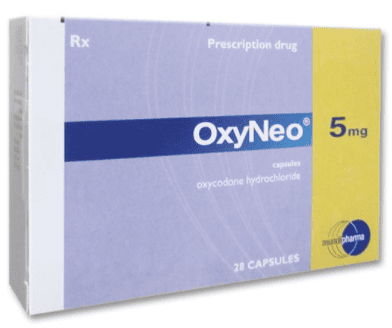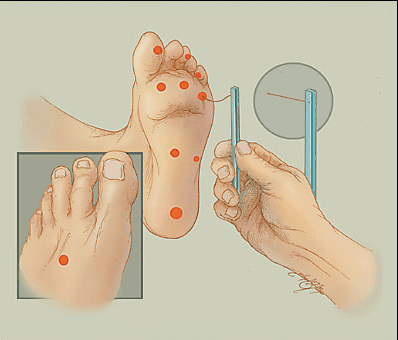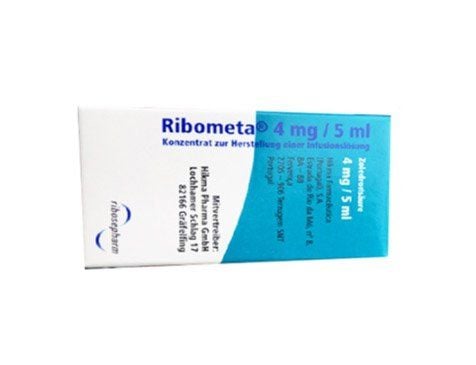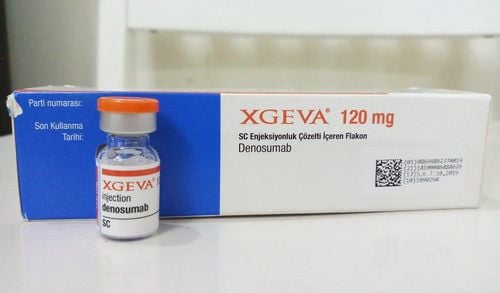This is an automatically translated article.
The article was written by Master - Doctor Mai Vien Phuong - Head of Department of Gastrointestinal Endoscopy - Department of Medical Examination & Internal Medicine - Vinmec Central Park International General HospitalPain is a common symptom of cancer. In fact, it is estimated that around 66% of people with cancer will experience pain as a symptom at some point. Cancer pain can have a number of causes; including the cancer itself, the effects of different treatments or surgeries used to treat the cancer. Read the following article to learn more about cancer and pain.
1. Cancer and pain
All cancers have the potential to cause pain. The amount of cancer pain you may experience can depend on many different factors, including:The type of cancer . The stage of the cancer and whether it is invasive or metastatic. Your personal pain tolerance. Other health conditions you may have. The type of treatments and therapies you are receiving. According to the National Cancer Institute, younger people are more likely to have cancer pain, and people with late-stage cancer tend to have more intense pain.
1.1. Bone cancer
Bone cancer is when cancer occurs in your bones. Cancers that start in the bones, called primary bone cancers, are actually quite rare in adults. In fact, it makes up only 0.2% of all cancers.
Many times bone cancer is caused by cancer that has spread to the bone from another location in the body. This can happen with many types of cancer, such as breast, lung, and prostate cancers.
Trắc nghiệm: Thử hiểu biết của bạn về bệnh ung thư
Ung thư là nguyên nhân gây tử vong hàng thứ 2 trên thế giới. Thử sức cùng bài trắc nghiệm sau đây sẽ giúp bạn có thêm kiến thức về yếu tố nguy cơ cũng như cách phòng ngừa bệnh ung thư.
Bài dịch từ: webmd.com
1.2. Pancreatic cancer
Pancreatic cancer is cancer that develops in your pancreas. The pancreas is the organ that produces enzymes that are important for the digestive process. It also helps regulate your blood sugar.
1.3. Head and neck cancer
Head and neck cancer are diseases that start with:
Lips and mouth. Throat. Larynx . Nose and sinuses. Salivary glands.
1.4. Brain and spinal cord cancer
The most common symptom of a brain tumor in adults is headache. These headaches often become more frequent and severe as time goes on.1.5. Lung cancer
Lung cancer is cancer that starts in your lungs. It is one of the most common cancers in the world. Similar to pancreatic cancer, lung cancer has few symptoms in its early stages. So often, it is not diagnosed until the later stages.
As lung cancer grows and spreads, it can put pressure on your lungs and chest wall. This can lead to chest pain that gets worse when you breathe, cough, or laugh. In addition, tumors may partially or completely block some airways. This can also lead to discomfort and can cause distressing symptoms such as shortness of breath and wheezing.
2. How to manage pain
There are different ways to help manage cancer pain. Such as:2.1. Medicine
Prescription medications can help ease the pain of cancer. Your doctor will choose a medication based on how mild, moderate, or severe the pain is.Some examples of drugs that can be used to relieve cancer pain are:
Acetaminophen and non-steroidal anti-inflammatory drugs (NSAIDs). In general, acetaminophen and NSAIDs are prescribed when the pain is mild. However, NSAIDs can also be used along with opioids for moderate to severe pain. Some examples of NSAIDs used to relieve cancer pain include: Celecoxib. Diclofenac. Ibuprofen. Ketoprofen. Ketorolac . Opioid pain relievers. If you have moderate or severe pain, you may be prescribed an opioid. These are potent pain relievers and have the potential to lead to tolerance or addiction, so their use must be carefully monitored. Opioids used to relieve cancer pain are: Buprenorphine. Codeine . Diamorphine. Fentanyl . Hydrocodone . Hydromorphone. Methadone . Morphine . Oxycodone. Oxymorphone. Tapentadol. Tramadol . Other drugs. Depending on the type of pain you are experiencing, it is possible that other medications may be used as part of your pain management plan. Examples: Antiepileptic drugs such as gabapentin and pregabalin. Antidepressants such as tricyclic antidepressants (TCAs) and certain types of serotonin and norepinephrine reuptake inhibitors (SNRIs). Corticosteroids. Drugs used to treat cancer that have spread to the bones, including bisphosphonates and denosumab.

3. Complementary treatments for cancer pain
In addition to medication, there are other ways to help manage cancer pain. These may include:Nerve blockade. Inject anesthetic or other medicine to stop nerve pain. Nerve stimulation. This may include transcutaneous electrical nerve stimulation (TENS) or implantation of a device. Both work by stimulating nerves with a mild electrical current, which helps relieve pain. Cut specific nerves near the spinal cord. This is a type of surgery that relieves pain by cutting specific nerves near the spinal cord. This procedure is less common. Alternative treatments. Various alternative therapies may be used along with standard treatments to help relieve cancer pain. Some examples include acupuncture, hypnosis, and relaxation techniques.
4. Cancer treatment can also lead to pain
In addition to the pain caused by the cancer itself, different types of cancer treatments can also lead to pain.4.1. Surgery
Surgery may be used to remove a tumor from your body. If you have cancer surgery, you will have postoperative pain for the days or weeks after the procedure.Pain from surgery is usually treated with medication. You'll probably need to take a strong pain reliever right after your surgery and then switch to a less powerful one over the next few days.
In some cases, you may experience phantom pain after surgery. This is pain or discomfort coming from an area of your body that has been amputated. It can happen if you've had a mastectomy or a limb. There are a number of treatments that can be effective for phantom pain. This includes medication, TENS, or physical therapy.
4.2. Chemotherapy
Chemotherapy uses strong drugs to kill cancer cells. However, it can also lead to painful side effects. One of these is chemotherapy-induced peripheral neuropathy (CIPN), which can cause pain, numbness, and tingling.
According to the US National Cancer Institute, studies on drugs and natural products that help relieve pain caused by CIPN have had mixed results. Some examples of drugs that may be used include:
Local anesthetics. Short-term steroids. Anticonvulsants. Antidepressants. Opioids. Alternate treatments for CIPN are also being explored. Some examples of these are acupuncture and relaxation therapy.
Mouth and throat ulcers can also develop as a side effect of chemotherapy. While these symptoms will eventually go away on their own, you can reduce discomfort by applying topical pain relievers and avoiding foods that can irritate the sores.
4.3. Radiotherapy
Radiation therapy uses high amounts of radiation to kill cancer cells. Like chemotherapy, it can also cause painful side effects. These may include:
Dermatitis, which is irritation and inflammation of the skin in areas treated with radiation. Mucositis, which is inflammation of the mucous membranes caused by radiation therapy. Radiation pneumonitis, which is an inflammation of the lungs that can occur when the chest is treated with radiation. Radiation cystitis, which occurs when radiation damages the lining of the bladder. Brachial plexus disease, is damage to the nerves in the arm. Treatment for the side effects of radiation therapy may depend on the symptoms you are experiencing. These may include pain relievers, steroids to reduce inflammation, or anticonvulsants for nerve pain.
4.4. Other cancer treatments
Other types of cancer treatments, such as immunotherapy and targeted therapies, can also cause pain as a side effect.Immunotherapy. Immunotherapy helps your immune system fight cancer. Pain from this treatment can include pain at the injection site and generalized aches and pains. Targeted therapy. Targeted therapy includes antibodies and small molecules that specifically target cancer cells. Some people who are being treated with targeted therapy may develop mouth sores. Medicines are used to help reduce these side effects while you are being treated. The side effects usually go away after your treatment ends.
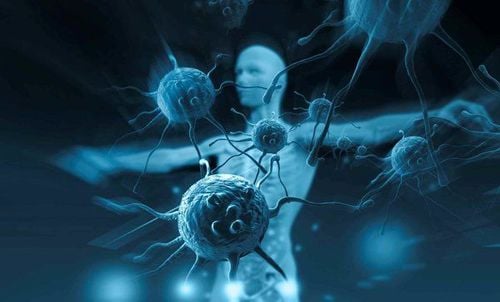
5. When should you talk to your doctor?
Cancer pain can be effectively managed with a variety of methods, helping to alleviate this symptom and improve your quality of life. Therefore, talk to your doctor if:Pain is new or occurs in a different location. Pain does not go away. Pain occurs between doses. Your current pain relievers are not working. Pain interferes with your daily life by affecting your movement, sleep, or ability to perform daily activities. When you see a doctor, tell them:
Where is your pain? How does the pain feel? How severe is the pain? How long does the pain last? When did the first pain begin? Does the pain occur at a specific time? Does the pain occur with specific movements or activities? What things make the pain better or worse? You will likely be asked to rate your pain on a scale of 1 - 10. For example, 1 means you are feeling little pain and 10 means you are experiencing very severe pain. Your doctor and care team can use this information as well as your medical history to help plan your pain management better.
6. Conclusion
Pain is a common symptom of cancer. It can be caused by the cancer itself, by the methods used to treat the cancer, or both. Some cancers are associated with more pain than others. Such as bone, pancreatic, head and neck cancers. However, pain can occur with all cancers.It is important to remember that cancer pain is treatable. In fact, there are many methods that can be used to manage cancer pain. The above information is for reference only. You should consult your doctor carefully before deciding on any treatment method.
Please follow the website: Vinmec.com regularly to update many other useful information.
Please dial HOTLINE for more information or register for an appointment HERE. Download MyVinmec app to make appointments faster and to manage your bookings easily.
References: cancer.org, nih.gov, cancer.gov




